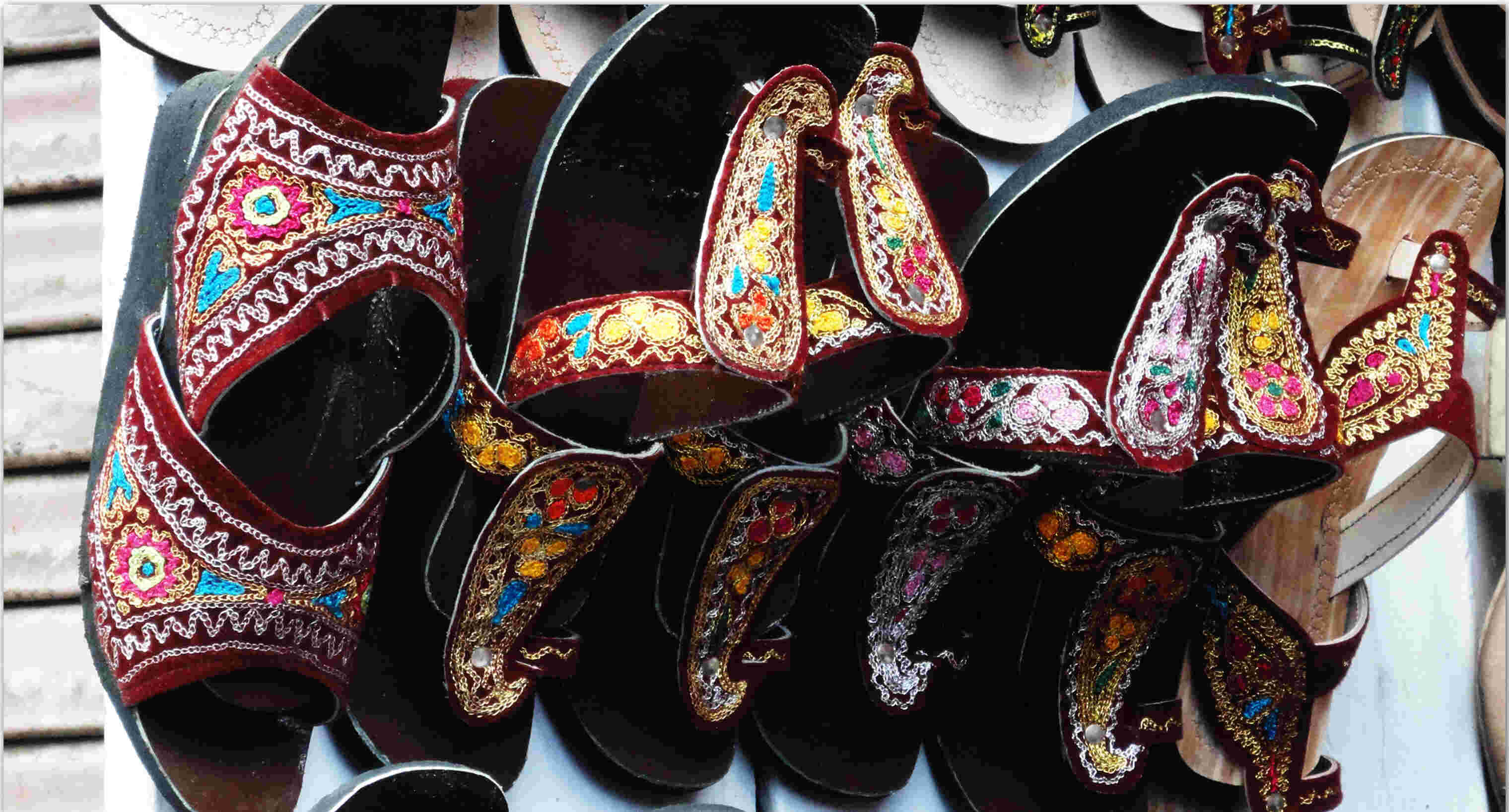A heritage blended with glam
Traditional Chamba chappals have evolved over time to incorporate a wide range of embroidered products that are lucrative to exports market and find resonance among look- and feel-conscious younger population

As per a local legend, about 11 centuries ago, a prince from the picturesque town of Chamba on the banks of the river Ravi was betrothed to a princess from the neighbouring Kangra valley. The bridal trousseau included wide range of footwear which so impressed Raja Charat Singh that he invited cobblers and craftsmen from Kangra to settle in the kingdom of Chamba which, on account of being sheltered by snow-clad mountain barriers, continued to remain one of the 'best preserved heartlands of the Himalayan arts'. Named after the devout royal princess of Bharmour, Champavati, the town is situated at an elevation of about 926 feet. It is said that in ancient times Chamba was known as Airavati. There are very few places in the world that can rival its stunning natural beauty, with the Dhauladhar, Pir Panjal and Zanskar ranges of the Himalayas enveloping Chamba, and giving it an appearance of a village fortress.
The traditional Chamba chappal (slipper) was 'nok-wali' or 'nokdar' for both men and women. But thanks to the creativity of the artists, and their quick response to market demand, multiple versions of Chamba chappal are now available. These include embroidered outdoor slippers, embroidered bedroom slippers, embroidered chappals, embroidered leather socks worn with Chamba chappals, embroidered village type shoes (juta), embroidered pani-jute/juti, fancy embroidered ladies' footwears, besides three versions of the traditional chappals — 'nokdar', 'jalidar' and 'khopa' — and plain leather socks worn with Chamba chappals.
The striking feature of Chamba chappals is the embroidery done on them, which is also the main mark of distinction vis-à-vis the Kolhapuri chappal. The embroidery known as 'Chamba kadhai' is done separately on a velvet cloth using various bright-coloured silk threads such as pink, blue, yellow, purple, red, orange, brown, black, green etc. The silk and golden threads used for embroidery are called russi-tilla. The motifs are usually of lantana and other local flora. They are light-weight and well within the budget.
The major raw material is sheep and goat skin, buff leather and locally made ordinary sole leather, besides chrome leather for the upper portion of slippers. Although in earlier days, the sole of chappals was also made of leather, these days rubber is used for durability and affordability. Other important components include wool and velvet cloth for doing embroidery. The 'upper' part of the chappals (the part that covers the foot from above) is made of leather by using a punch and dye. To give a glam look, a glossy paper is inserted between the 'upper' and the 'lining'. The upper and lining are then stitched together with the thread using a kundi (long cobbler's needle. The thread used is silk and the embroidery is done without any prior drawing on it. The artists make an outline from the thread (stem stitch) and fill the remaining area with cross-stitches and chain stitches. The extra portions of the leather are cut and scraped. Then, the banwar (insole or the part that goes below the feet) is prepared. It is cut in the shape that the artist draws according to the size of the chappal (slipper). A punch is then used to make designs on the border. The extra portions from the insole are removed. Lastly, the sole is cut and the insole and upper part is pasted on it. The heel is then fixed on the sole with nails on a wooden platform, and the prototype is ready
The third dimension!
The process of creating designs on leather is called leather carving — it involves using metal implements to compress moistened leather in such a way as to give a three-dimensional appearance to a two-dimensional surface. This is in fact a unique specialization of the Chamba craftsmen. Both the National Footwear Design Institute and the National Institute of Design are helping with the documentation, and preparing training manuals for the next generation. The two institutions are trying to brand the slippers for exports, and for the younger generation that is keen to promote traditional crafts but is uncompromising when it comes to quality of the 'look and feel of the product' as well as the packaging.
The Himachal Pradesh Patent Information Centre of the HIMCOSTE which, together with the Ambedkar Mission Society, Chamba, holds the GI tag on behalf of the indigenous manufactures of 'Chamba chappals' in the tehsils of Mehla, Brahmour, Bhattiyat, Tissa and Salooni, is aware of these concerns, and is responding positively to the feedback received from various quarters.
A chappal for which royalty flipped should certainly find new patrons among all those who are looking for aesthetics, comfort, natural feel, besides of course ensuring sustainable livelihoods at the grassroots!
Views expressed are personal



